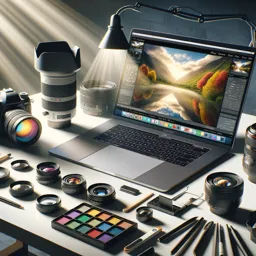Introduction to Aquatic Macro Photography
Macro photography opens up a fascinating world of minute details inaccessible to the naked eye. When combined with aquatic environments, this genre offers a unique opportunity to capture the intricate beauty of small underwater life—ranging from tiny fish and crustaceans to stunning plant textures. While it shares some challenges with broader underwater photography, aquatic macro brings its own set of technical and creative considerations.
Why Focus on Macro?
Shooting macro in water allows photographers to highlight the astonishing diversity found below the surface. Aquatic insects, microscopic organisms, and delicate coral textures often go unnoticed in wide shots but take center stage in macro compositions. This form of photography helps raise awareness about aquatic biodiversity and can reveal crucial details important for scientific research and conservation.
Essential Equipment for Aquatic Macro Photography
- Compact Camera or DSLR/Mirrorless: Choose a camera model with manual controls and good low-light performance.
- Macro Lens: A lens that allows close focusing will help fill the frame with your tiny subjects.
- Underwater Housing: Ensure your camera and lens are protected by quality underwater housing rated for your working depth.
- Lighting: Underwater strobes or continuous lights will help illuminate small subjects and bring out color and detail.
- Focusing Aids: Consider focus lights or magnifying viewfinders for fine adjustments in challenging visibility.
Best Practices for Stunning Macro Shots
- Stabilize Your Camera: Use both hands and, if possible, brace against a solid surface (without damaging aquatic life).
- Approach Slowly: Move gently to avoid disturbing tiny creatures or stirring up debris that could cloud your shot.
- Focus on the Eyes: For animal subjects, sharp eyes create a compelling focal point.
- Use a Small Aperture: A higher f-stop (like f/16) increases depth of field, ensuring more of your subject is in focus.
- Pay Attention to Backgrounds: Simplifying the frame via positioning helps your subject stand out.
Creative Approaches to Aquatic Macro Photography
Once you master the technical aspects, experiment with lighting angles, reflections, and color to create compelling compositions. Get close and explore unique perspectives, frame your subject with surrounding elements, and try split shots (half in, half out of water) for dynamic storytelling.
Conservation Ethics
Always practice responsible behavior in aquatic environments. Never touch or move creatures for a better shot and take care to avoid harming delicate habitats. Through your photography, you can contribute to environmental awareness and the preservation of these fascinating worlds.
Conclusion
Aquatic macro photography challenges you to see the submerged world from a fresh viewpoint. With practice, the right gear, and a thoughtful approach, you’ll uncover an astonishing microcosm teeming with life, color, and detail just beneath the surface. Dive in, and let your creativity flow!
































